- Joined
- 11 June 2014
- Messages
- 1,533
- Reaction score
- 2,848
sgeorges4 said:was the flitzer actualy proposed for the volksjäger?
Yes, although it was apparently submitted too late to be given serious consideration.
sgeorges4 said:was the flitzer actualy proposed for the volksjäger?
sgeorges4 said:that was the bmw 003 variant?
Hi,
the FW P.0310239-01,P.0310239-02 & P.0310239-10,is that right ?.
Козырев Михаил Егорович. Реактивная авиация Второй мировой войны читать онлайн | Электронная библиотека e-libra.me
Козырев Михаил Егорович. Реактивная авиация Второй мировой войны читать онлайн | Электронная библиотека e-libra.me Читать онлайн Реактивная авиация Второй мировой войны. Козырев Михаил Егорович.Михаил Егорович Козырев, Вячеслав Михайлович КозыревРеактивная авиация Второй мировой войны Введение...e-libra.ru

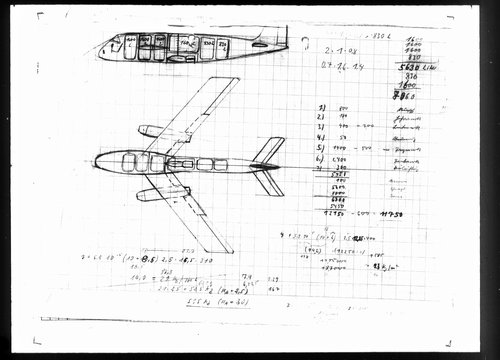
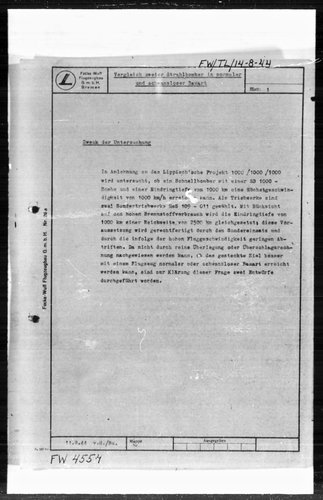
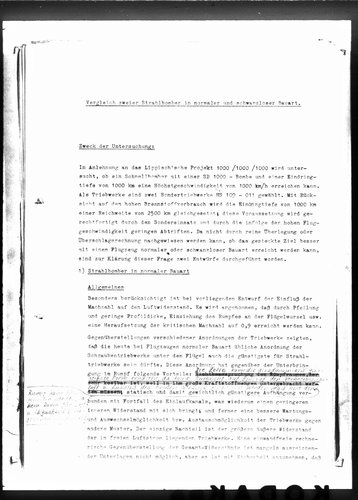
Thank you my dear Dan,
and I speak generally,do you think there was a series between 0310 239-01 and 0310 239-10 ?,I mean from
-02 to -09 !,but still unknown ?.
Funny how a document from the Air Department in Wright Field found its way into a german archive... I discovered it by doing some research on completly other topics. The document must be from 1941/42. Here is the Focke-Wulf Fernkampfflugzeug with 4 BMW-803 engines. Could the big load in the bombbay be the proposed version of the german 5t-bomb?
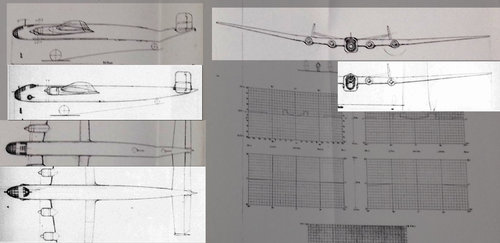
Thank you : I had never seen a picture of the "H" before ...Please , could you show us the 3-views ?
BTW , I think , the athpilot post showed only the 1/9/1941 No238 ...
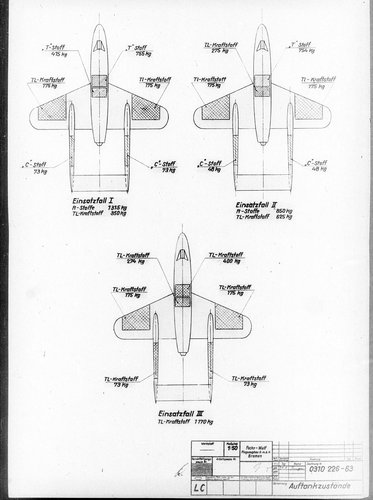
Probably an early pproposed configuration.
Below the Nr. 272 document translated in English by the AAF ATSC Air Documents Division in 1946, but with some of the drawings almost illegible:
Side view = Focke-Wulf drawing 0310 226-62 from Baubeschreibung Nr. 272, dated February 1, 1944.
Three-view = Focke-Wulf drawing 0310 226-61 from the same report of the same date.
Here is the third drawing from the set - 0310 226-63, same report, same date (the report is Feb 1, the drawing is Jan 31).
the # 4 / picture db 3 shows the Focke-Wulf "project" (rather proposal) 0310256 :Hi,
the FW had a project for Schnellbomber high speed bomber,powered by one turbojet engine,mounted above the fuselage,had anyone a drawing to it ?.
Hi,
in this report,the Focke-Wulf Entwurf II & III,what was the designation
number for both,it was written on the drawings,but I couldn't read it ?.
From, Luftwaffe over America,
Focke Wulf P 8035.
Actually was a BMW 801E fitted with a turbocharger. I believe it was considered to the Ju 388.From, Luftwaffe over America,
Focke Wulf P 8035.
No, the BMW P 8035 was a high-altitude turbosupercharger.
Actually was a BMW 801E fitted with a turbocharger. I believe it was considered to the Ju 388.From, Luftwaffe over America,
Focke Wulf P 8035.
No, the BMW P 8035 was a high-altitude turbosupercharger.
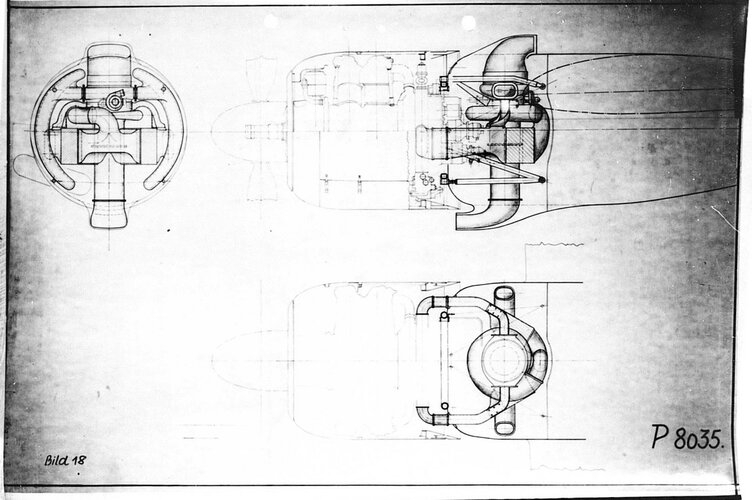
. . . then it finally became the BMW 801 J
What was the BMW 801 TJ ?
cheers,
Robin.
The BMW 8035 was an in-house designation to a BMW 801E mated to a turbosupercharger. Turbosuperchargers used a RLM designation like 9-2426 or 9-2279, by Heinkel-Hirt/DVL. I don`t know how of if BMW designated their turbochargers (DB called them DBT..., Heinkel-Hirt TK...), but project 8035 was related to the full package (in this case engine plus turbo), as in all other BMW projects, as far as I know, they always include an engine. Please see the graph, taken from "Flugmotoren und Strahltriebwerke", page 173. The BMW 8035 and the BMW 801J projected performances are compared, making them separate designs.Actually was a BMW 801E fitted with a turbocharger. I believe it was considered to the Ju 388.From, Luftwaffe over America,
Focke Wulf P 8035.
No, the BMW P 8035 was a high-altitude turbosupercharger.
The BMW P 8035 was a high-altitude turbosupercharger. It was originally designed for the BMW 801 D, then work started on mating it to the BMW 801 E. This combination was first referred to as the 'BMW 801 E mit P 8035', then simply 'P 8035', then finally it became the BMW 801 J.
View attachment 647945
. . . then it finally became the BMW 801 J
What was the BMW 801 TJ ?
cheers,
Robin.
The BMW 801 TJ was a BMW 801 J supplied as a complete 'power egg' with all associated devices including support structure, pressure control system, lubricant cooler, speed sensor etc. but without propeller, spinner or fairing.
The BMW 8035 was an in-house designation to a BMW 801E mated to a turbosupercharger. Turbosuperchargers used a RLM designation like 9-2426 or 9-2279, by Heinkel-Hirt/DVL. I don`t know how of if BMW designated their turbochargers (DB called them DBT..., Heinkel-Hirt TK...), but project 8035 was related to the full package (in this case engine plus turbo), as in all other BMW projects, as far as I know, they always include an engine. Please see the graph, taken from "Flugmotoren und Strahltriebwerke", page 173. The BMW 8035 and the BMW 801J projected performances are compared, making them separate designs.Actually was a BMW 801E fitted with a turbocharger. I believe it was considered to the Ju 388.From, Luftwaffe over America,
Focke Wulf P 8035.
No, the BMW P 8035 was a high-altitude turbosupercharger.
The BMW P 8035 was a high-altitude turbosupercharger. It was originally designed for the BMW 801 D, then work started on mating it to the BMW 801 E. This combination was first referred to as the 'BMW 801 E mit P 8035', then simply 'P 8035', then finally it became the BMW 801 J.
View attachment 647945
